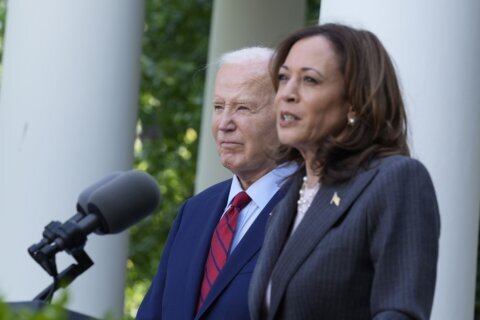Americans have a dual outlook on retirement. Just about everyone wants to retire comfortably but way too many people don’t have the cash they need to retire on time and with ample money in the bank.
A case in point: According to a recent U.S. News survey of 2,000 adults, 50% of respondents said they had to pause saving for retirement at some point in 2022, and 41% of those surveyed stopped contributing to retirement funds like 401(k)s or individual retirement accounts.
“More than one-third of workers feel they are ‘significantly behind’ on their retirement savings,” says Greg McBride, Bankrate’s chief financial analyst. “And those who already feel behind are twice as likely to be contributing less this year than workers who feel they’re on track or ahead of where they should be.”
Uncle Sam is taking active steps to help Americans amp up their retirement savings game, particularly with the passage of the SECURE 2.0 Act, which aims to help workers lagging on their long-term savings play catch-up.
Let’s take a closer look at the SECURE 2.0 Act and what it offers retirement savers. When researching the act for your retirement planning needs, rally around these key themes.
5 Things to Know About the SECURE 2.0 Act
1. The SECURE 2.0 Act aims to get retirement savers back on track.
2. The legislation especially focuses on small companies.
3. These elements should help struggling retirement savers.
4. Auto-enrollment is a big plus.
5. The saver’s match feature replaces the saver’s credit.
Is the U.S. in a Retirement Crisis?
Yes, the U.S. is headed for a retirement crisis, financial experts say. Steve Sexton, CEO of Sexton Advisory Group in Temecula, California, points to a recent American Advisors Group survey
of senior citizens that found 43% of respondents rated the conditions of their retirement savings as “poor” and 44% said they didn’t have enough saved to retire comfortably.
The retirement savings landscape is further exacerbated by inflation and the rising cost of living, making it challenging for people to make ends meet, much less save for retirement.
“This is a big reason why we see 30% of people between the age of 65-69 still working in America, although the traditional retirement age is 65,” Sexton says.
The SECURE Act Defined
The SECURE 2.0 Act was passed by Congress on Dec. 23, 2022, as part of the Consolidated Appropriations Act of 2023. The legislation builds upon the “Setting Every Community Up for Retirement Act of 2019 (SECURE Act of 2019)” and was signed into law by President Joe Biden on Dec. 29, 2022.
The SECURE 2.0 Act intends to solve a larger retirement savings coverage problem, as many Americans are either not contributing to a workplace retirement plan or lack access to one.
“The problem for smaller employers is creating, implementing and maintaining a workplace retirement plan, and then getting employees to contribute to the plan so their savings last through retirement,” says Jerry Cicalese, senior vice president at Wakefield, Massachusetts-based Sentinel Benefits & Financial Group. “The provisions in SECURE 2.0 seek to fill in the holes left by the original SECURE Act in 2019.”
[How Secure Act 2.0 Impacts Investors]
What the SECURE 2.0 Act Offers Retirement Savers
The SECURE 2.0 Act aims to “better prepare Americans for retirement,” Cicalese says.
“More people will be covered by newly created retirement plans, particularly those employed by smaller businesses who historically may not have had the resources to sponsor a retirement plan,” he says. “In addition, the act’s provisions will expand participation as well as incentivize higher savings.”
The SECURE 2.0 Act rolled out a range of provisions intended to improve retirement savings outcomes.
“First, the Act’s provisions include larger 401(k) and IRA catch-up provisions, which may help older workers accelerate their retirement savings goals,” Sexton says.
SECURE 2.0 also delays required minimum distributions, or RMDs. “These are mandatory withdrawals from your retirement accounts traditionally made at age 72 to 73 to 75 … depending on the year you were born,” Sexton notes.
The legislation also allows for automatic 401(k) transfers between jobs and enables people to seamlessly convert 529 college funds to Roth IRAs and withdraw money from retirement accounts without penalty as an “emergency distribution.”
“This is limited to $1,000 and must be paid back within three years to avoid penalties,” Sexton adds.
Overall, these provisions are intended to remove certain roadblocks that prevent people from building their retirement savings.
“That said, the SECURE 2.0 Act doesn’t address other very real financial challenges, like the cost of living,” Sexton says.
[READ: Big Changes Are Coming for 401(k)s]
‘Much Needed’ Automatic Enrollment Feature
The SECURE 2.0 Act also adds an automatic enrollment element to the retirement savings landscape, which particularly resonates with financial services experts.
“We anticipate automatic enrollment will largely impact retirement plan participation,” Cicalese says. “Studies have repeatedly shown us that most employees who are automatically enrolled remain in the plan and do not opt out. That should lead to more people saving more for retirement and increasing their savings rates annually.”
The act’s automatic enrollment provision also has an indirect impact on existing plans, as it establishes the benchmark for how employees should be enrolled.
“Plan sponsors are now automatically enrolling everyone below the default rate and doing so with an ongoing frequency, including participants with established plans,” Cicalese adds.
A ‘Saver’s Match’
While this provision won’t become effective until taxable years after Dec. 31, 2026, under SECURE 2.0, the current saver’s credit will be replaced with the saver’s match.
“This match is designed to incentivize low- and moderate-income individuals to save for retirement. It comes with a number of benefits,” Cicalese notes. “The match removes the barrier of a tax liability being lifted, increases compensation band coverage and changes the credit paid in cash as part of a tax refund into a federal matching contribution that must be deposited into a taxpayer’s IRA or retirement plan.”
Additionally, with education costs rising, employees often lack the financial means of contributing to a plan after making their student loan payments.
“With SECURE 2.0, employees no longer have to sacrifice the employer match if they choose to pay off their student loans instead of making 401(k) contributions,” Cicalese adds. “The new provision will allow an employer to match student loan payments as if they were elective deferrals, so employees who cannot afford to defer still receive the match.”
[Read: How to Save for Retirement.]
Will the SECURE 2.0 Act Have a Big Impact on Retirement Savers?
That’s another “yes” from retirement planning specialists.
“The new rules will benefit a substantial segment of largely underserved savers,” says Kevin Gaston, director of plan design consulting at Vestwell in Atlanta. “The enhanced saver’s match will give an incentive from federal government matching to participate in a retirement plan.”
The act will also help decrease the “likelihood of savers having to work past retirement age, increase education savings and create more opportunities to safeguard their livelihood when unexpected events occur,” Gaston notes. “Additionally, with substantial tax credits for employers, more small businesses will find it economically feasible to start a company retirement savings plan.”
Meanwhile, the single biggest thing you can do to improve your retirement savings is increase your knowledge of financial planning.
“Financial education and knowing the specifics of their benefit offerings for Americans will be the key to helping savers understand the impact of new laws like SECURE 2.0,” Gaston says. “That will enable people to make the best decisions for their families and their future.”
More from U.S. News
How to Max Out Your 401(k) in 2023
401(k) Hardship Withdrawals Hit Record High
What Retirement Savers Need to Know About The SECURE 2.0 Act originally appeared on usnews.com







